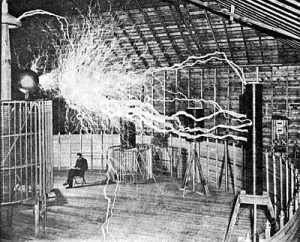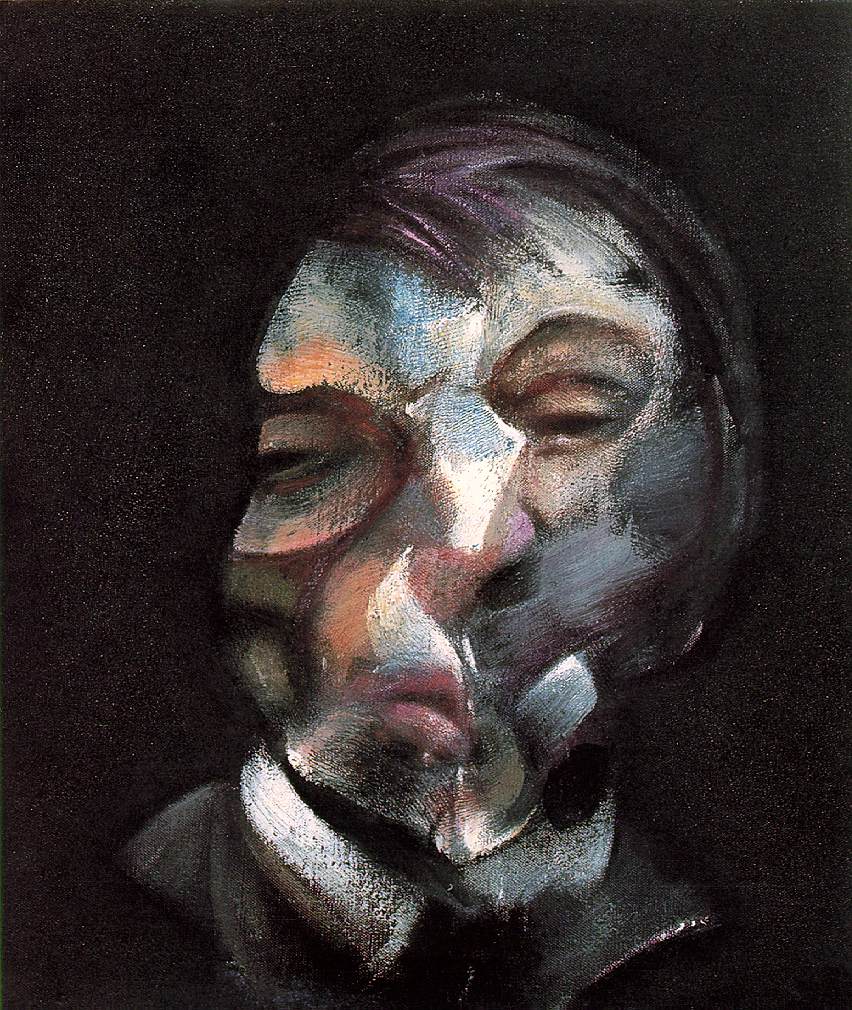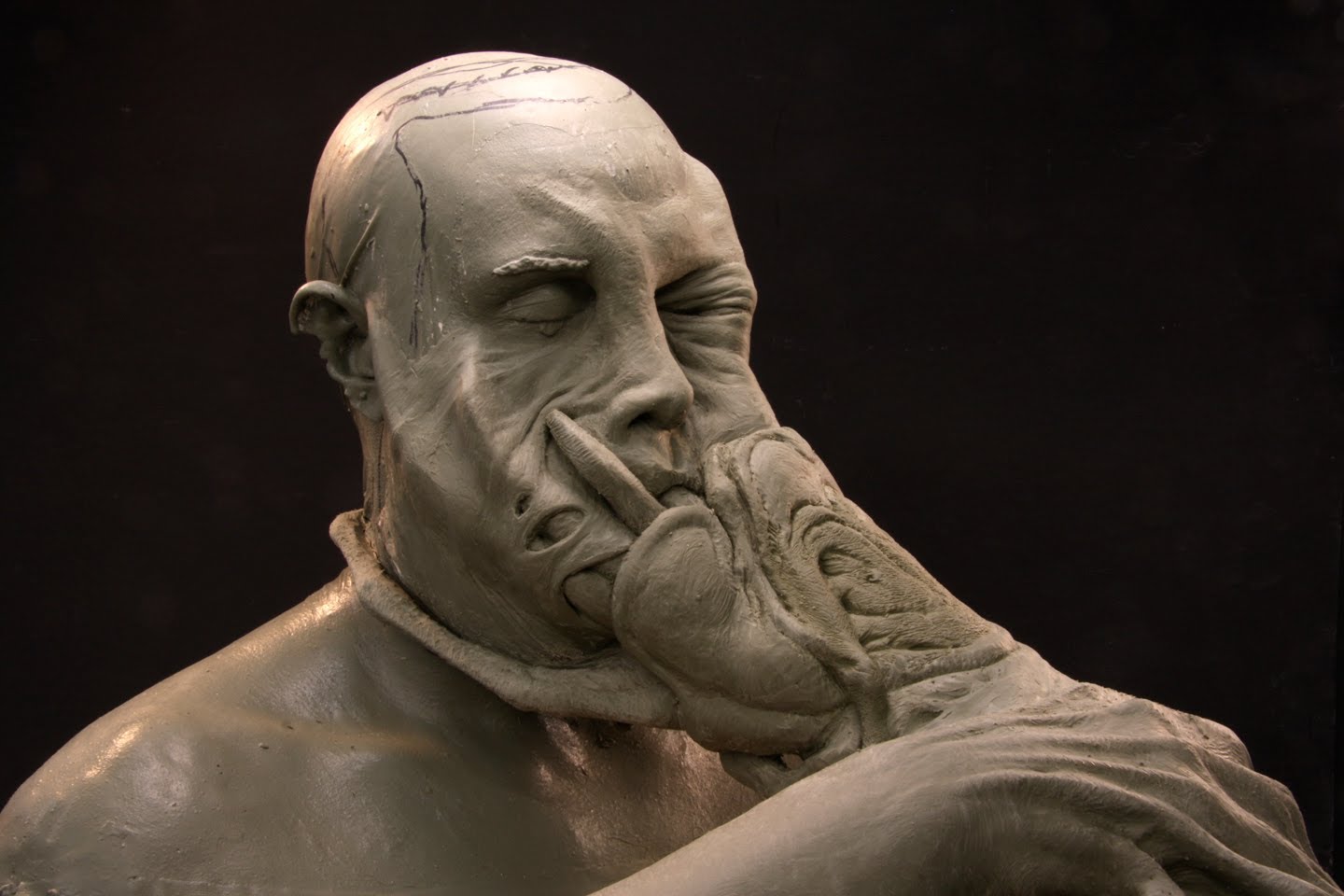The following is the second of a two-part series. The first installment, published on Dec. 19, 2016, can be found here.
In Writing Degree Zero, Barthes suggests disengaging from literary language by creating “a colorless writing, freed from all bondage to a pre-ordained state of language.”[1] He says “writing at the zero degree is basically in the indicative mood, or if you like, amodal.”[2] The goal is to create a writing absent of style “in which the social or mythical characters of a language are abolished in favour of a neutral and inert state of form.”[3] This writing would be in between the subjective and imperative moods, and we see with it a move toward a certain kind of objectivity in which it would become a cipher for the unconscious.
This becomes more apparent after Elements of Semiology in which writing itself presences langue, as in the food menu, whereas speech is the choice from the menu. The point then becomes that the menu is itself an apparatus delimiting possible forms of expression. One can never be “free” in Sartre’s sense, but one can maneuver into a way of writing – and this is why I say structuralism / poststructuralism is a kind of writing – that gives access to the unconscious. I believe that this is where Deleuze advances on Barthes in Difference & Repetition.
We are now better able to see the political nature of Deleuze’s project within the Marxist tradition. It is important then to note the favorable treatment that Louis Althusser receives in Difference & Repetition:
Althusser and his collaborators are, therefore, profoundly correct in showing the presence of a genuine structure in Capital, and in rejecting historicist interpretations of Marxism, since this structure never acts transitively, following the order of succession in time; rather, it acts by incarnating its varieties in diverse societies and by accounting for the simultaneity of all the relations and terms which, each time and in each case, constitute the present: that is why ‘the economic’ is never given properly speaking, but rather designates a differential virtuality to be interpreted, always covered over by its forms of actualization; a theme or ‘problematic’ always covered over by its cases of solution.[4]
Now we are in a position to see just why the project of schizoanalysis became necessary for Deleuze as he teamed up with his new colleague from the psychoanalysis department at Vincennes, Felix Guattari. This should also clear up why capitalism and schizophrenia go together and a deeper sense of why in moments where it seems capitalism has “won” we get people claiming the end of history. It also sheds light on philosophies of the event and there seemingly ahistorical nature.
Event philosophy is not anti-historical so much as it is in a lineage through Deleuze of Nietzsche’s genealogical method, a method that gets re-interpreted in 1960s France when attempts at zero-degree writing are part of a leftist critique of Gaullism that employs the language of poetics and math. It is no surprise then, that this is the period when the Oulipo (Ouvoir de littérature potentielle) gathering of mathematicians and writers began their workshop to create constraint-based literature using formal mechanisms to create events.
The big “event” of the late 1960s France, was of course May of 1968, which began with students and spread to factories, ultimately halting France’s economic production. There is simply no way to downplay the importance of the situation for French intellectual thought and for Deleuze’s career. Only after 1968 was Vincennes founded. Of course the philosophy of the event is more resonant with Alain Badiou than Gilles Deleuze, but in The Clamor of Being Badiou recalls more than a decade of conflicted thinking in relation to Deleuze only to say that his work and that of Deleuze form a “paradoxical tandem.”[5]
Moreover, Badiou claims that “Political sequences, bearing the stamp of the event, are one thing; philosophical eternity, even if, in its construction, it is conditioned by politics, is another.”[6] In Deleuze’s language, “philosophical eternity” would be the occupied space of aion against chronos. But aion occupies an envelope around the linear projection of the political, attempting a critique of the very shaping of articulation itself and how it comes to be. In this sense, Deleuze’s paradoxical tandem to Badiou’s

philosophical eternity is in Deleuze’s close relationship to rhetoric – and, by extension, poetics.
If poetics is making, Badiou is more poetic than Deleuze, as we can see in his eloquent explications in The Age of Poets. Deleuze emphasizes prosaic movement of flows, and we must ask: what are the forces at work in “filling out” and “narrowing” the shape of the event assemblage? And by extension, what are the poetics of those tools that accomplish the work of force? It is important here to note that while capitalism and schizophrenia “go together” as I have said, they are not the same thing.
In Anti-Oedipus, Deleuze and Guattari write:
it would be a serious error to consider the capitalist flows and the schizophrenic flows as identical, under the general theme of a decoding of the flows of desire. Their affinity is great, to be sure: everywhere capitalism sets in motion schizo-flows that animate “our” arts and “our” sciences, just as they congeal into the production of “our own” sick, the schizophrenics.[7]
Schizoanalysis is necessary because it allows one to get a the limits of capitalism, but those limits are never
static, nor can we see in all directions at once. The only way into schizoanalysis is to enter a performative stream. As they write,
“one can say that schizophrenia is the exterior limit of capitalism itself or the conclusion of its deepest tendency, but that capitalism only functions on condition that it inhibit this tendency, or that it can inhibit this tendency, or that it push back or displace this limit, by substituting for its own immanent relative limits, which it continually produces on a widened scale.[8]
A Thousand Plateaus then takes up the performative mode necessary to schizoanalysis. Still, like structuralism, the method is a kind of writing:
There is no longer a tripartite division between the field of reality (the world) and a field of representation (the book) and a field of subjectivity (the author). Rather, an assemblage establishes connections between certain multiplicities drawn from each of these orders, so that a book has no sequel nor the world as its object nor one or several authors as its subject.[9]
The project of schizoanalysis is its own assemblage, constantly growing and turning on association while maintaining enough meditative attention not to devolve into verbal salad. And that is its trick or subterfuge as a critical device; it must mask to a certain extent its sanity by maintaining an ongoing openness to the insane.
One tactic of the schizoanalytic method is to flirt with history while not actually doing history. As Deleuze and Guattari write, “History is always written from the sedentary point of view and in the name of a unitary State apparatus, at least a possible one, even when the topic is nomads. What is lacking is a nomadology, the opposite of a history.”[10] Nomadology gives name to the method of schizoanalysis by which one maintains a line of flight constantly moving to catch the occasional fractures in capitalism through the eventual spewings of the schizophrenic who is able to bring the unconscious to presence.
Thus pragmatics (or schizoanalysis) can be represented by four circular components that bud and form rhizomes. (1) The generative component: the study of concrete mixed semiotics; their mixtures and variations. (2) The transformational component: the study of pure semiotics; their transformations-translations and the creation of new semiotics. (3) The diagrammatic component: the study of abstract machines, from the standpoint of semiotically unformed matters in relation to physically unformed matters. (4) The machinic component: the study of the assemblages that effectuate abstract machines, simultaneously semiotizing matters of expression and physicalizing matters of content.[11]
Again, we can make some sense of this by returning to Deleuze’s extension of Roland Barthes’s work in Elements of Semiology. Consider, perhaps, looking at a book. An idiolect, or an author’s “style” in a work is analyzed as its generative component, in itself, as literary new criticism would have it. The transformational element would look at the material and historical connotations emanating from the text, author, movement, genre, etc. The diagrammatic component would look at the text from the position of its zero degree element. Here, all style gives way to the poetics of the language itself.
A musical analogy is helpful here. Deleuze and Guattari keenly describe how the introduction of the synthesizer removes music from the vertical and arboreal system and places it within a rhizome assemblage.[12] No more are we concerned with the trajectory toward increased chromaticism or “twelve tone” music that characterized much of the early twentieth century. Instead, the very tangible qualities of tone, resonance, attack, and decay become not only discernible but discernible as intention, as something that can be mapped and mimicked. I see this as indicative of the physical components of the abstract machine. As Deleuze and Guattari write:
We must therefore arrive at something in the assemblage itself that is more profound than these sides and can account for both of the forms of expression or regimes of signs (semiotic systems) and forms of content or regimes of bodies (physical systems). This is what we call the abstract machine, which constitutes and conjugates all of the assemblage’s cutting edges of deterritorialization.[13]
The zero degree element sees the objectivity of the language, its medium, etc. in contradistinction to the idiolect which would relate to some sort of authorial style. The abstract machine is able to see the linguistic performance as a manifestation of langue or the unconscious rather than parole, or speech.
 Finally, I would equate the ability to analyze the machinic component of a text to the ability to see it as potentially schizophrenic rupture, as a limit or gap in the otherwise seamless and normative flow of capitalism. One thinks of the holes in time and the map in the Terry Gilliam film, Time Bandits. Or, as a brilliant keyboard player I know once referred to an LSD experience: “I could hear behind the music.” Deleuze and Guattari refer to something quite similar, though cryptically in their discussion of Artaud in their chapter, “How to Make Yourself a Body without Organs.” Explicitly citing Artaud’s discussion of Ciguri from The Peyote Dance, they write:
Finally, I would equate the ability to analyze the machinic component of a text to the ability to see it as potentially schizophrenic rupture, as a limit or gap in the otherwise seamless and normative flow of capitalism. One thinks of the holes in time and the map in the Terry Gilliam film, Time Bandits. Or, as a brilliant keyboard player I know once referred to an LSD experience: “I could hear behind the music.” Deleuze and Guattari refer to something quite similar, though cryptically in their discussion of Artaud in their chapter, “How to Make Yourself a Body without Organs.” Explicitly citing Artaud’s discussion of Ciguri from The Peyote Dance, they write:
But there is in human existence another plane, obscure and formless, where consciousness has not entered, and which surrounds it like an unlimited extension or a menace, as the case may be. And which itself gives off adventurous sensations, perceptions. These are those shameless fantasies which affect an unhealthy conscious…I too have had false sensations and perceptions and I have believed in them.
This leads Deleuze and Guattari into a discussion of Carlos Castaneda, unconcerned with the scientific critiques of Castaneda’s ethnographic methods. Ciguri, in Artaud’s book, is quite like discussions of soma in the Rig Veda, simultaneously plant, deity, and experience of ingesting it. The process blurs the limits of the body in the world, the body as separate from the world.
At its final pragmatic level, schizoanalysis potentially challenges the directionality of psychedelic “mind-manifesting,” making us in our nomadic lines of flight witnesses to ourselves as sacrificial dépense. Only in this place does one shed the individual will and affirm chance, when one’s self becomes the dice to feel the aleatory capable of constellating. Only after moving through abstract machines to desiring machines does schizoanalysis break out of being just another structural model.
Conclusion
Let me return now to the last sentence of my thesis. I made the claim that the historical context around Vincennes is often lost on American readers, who perceive the French intellectuals of the 1960s and 1970s as a kind of legendary canon while missing the point that what made them revolutionary is ironically what is non-existent in American academia.
What, exactly, am I claiming is non-existent? Along with François Cusset, I think I would claim that the political ties that structuralism had to Marxian critique by way of Althusser, as Deleuze points out in Difference and Repetition, are non-existent in contemporary American society, despite the attempts of Occupy movements and Bernie Sanders supporters. They, like their more conservative liberal peers who backed Hillary Clinton, are still addicted to a logic of the externalized wish-fulfillment of individual and subjective “wills.”
Those perspectives mistake their privileged liberal fantasies for reality and when confronted with the  bubble they live in attempt change the rules of a game they agreed to and lost after the fact. This “do-over” mentality achieves nothing but a normalized, capitalistic buffer blinded to the ejaculations of the schizophrenic. Even the president who is about to leave office encouraged the nation in a condescendingly paternalistic voice that “we” Americans would show “the world” what a peaceful transition to rightwing power ought to be: submit through a politics of respectability to the cocks they will shove down your throats. And the flipside, which some predict, that an impeachment will occur before the first term is up, only rely on a politics of respectability and not a demand for justice, which would be forming barricades like the Paris commune.
bubble they live in attempt change the rules of a game they agreed to and lost after the fact. This “do-over” mentality achieves nothing but a normalized, capitalistic buffer blinded to the ejaculations of the schizophrenic. Even the president who is about to leave office encouraged the nation in a condescendingly paternalistic voice that “we” Americans would show “the world” what a peaceful transition to rightwing power ought to be: submit through a politics of respectability to the cocks they will shove down your throats. And the flipside, which some predict, that an impeachment will occur before the first term is up, only rely on a politics of respectability and not a demand for justice, which would be forming barricades like the Paris commune.
We are not becoming animals, in Deleuze’s terms, we are already domesticated chattel.
Roger Green, PhD, is a Lecturer in English who teaches composition and rhetoric at Metropolitan State University in Colorado. His recent professional work brings political theology into conversation with the field of aesthetics. He is the author of “Aldous Huxley, in the Aldous Huxley Annual: A Journal of Twentieth-Century Thought and Beyond (Ed. Bernfried Nugel and Jerome Meckier (vol. 14, 2014 / 2015) and several other related articles. In 2011 he received a certificate from the Cornell School of Criticism for the work he did with political theorist Victoria Kahn. He is also a performing musician and a composer.
_________________________________________________________________________
[1] Roland Barthes, Writing Degree Zero, Trans. Annette Lavers and Colin Smith, New York: Hill & Wang, 1967: 76.
[2] Ibid.
[3] Ibid., 77.
[4] Gilles Deleuze, Difference and Repetition, Trans. Paul Patton, New York: Columbia University Press, 1968: 186.
[5] Alain Badiou, The Clamor of Being, Trans. Louise Burchill, Minneapolis: University of Minnesota Press, 2000: 3.
[6] Ibid.
[7] Gilles Deleuze and Felix Guattari, Anti-Oedipus: Capitalism and Schizophrenia, New York: Penguin, 1972: 245.
[8] Ibid., 246.
[9] Gilles Deleuze and Felix Guatarri. A Thousand Plateaus: Capitalism and Schizophrenia, trans. Brian Massumi, Minneapolis: University of Minnesota Press, 1987, 23.
[10] Ibid.
[11] Ibid., 146.
[12] Ibid., 95.




